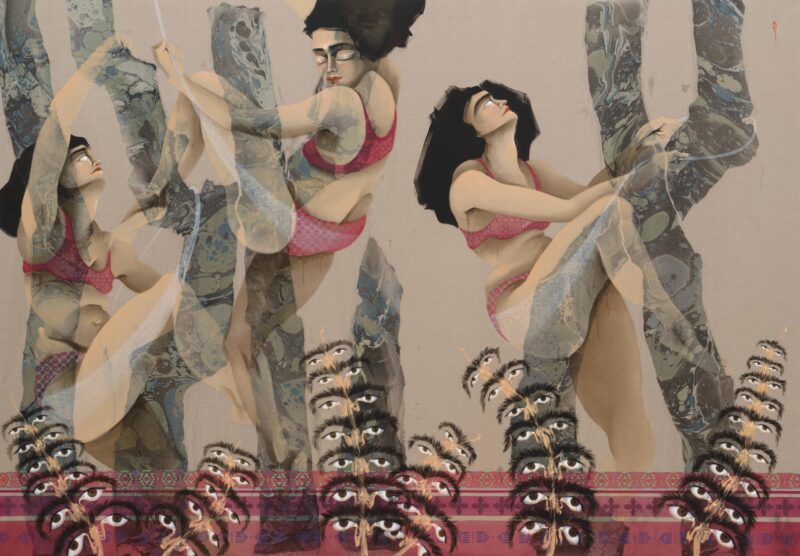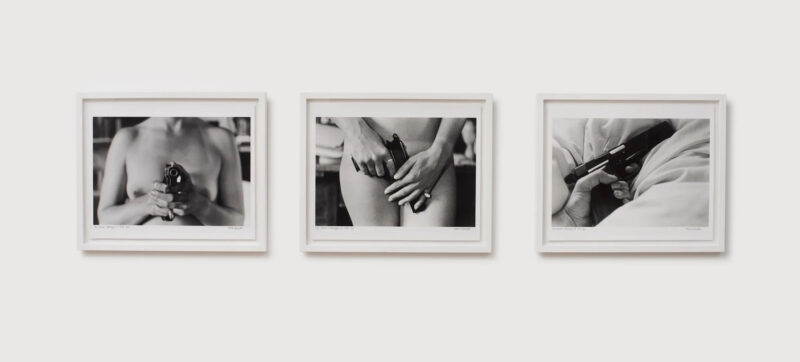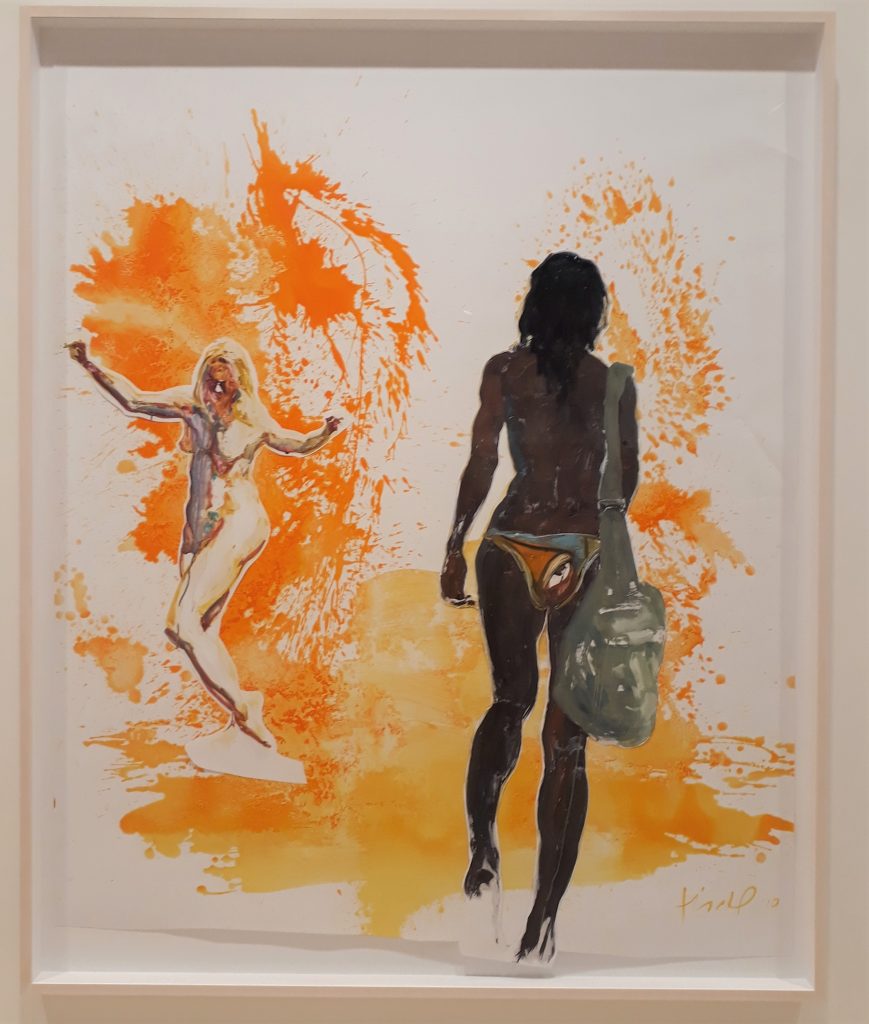
American painter Eric Fischl’s new show at Skarstedt (‘Figures’ to 9 April) presents, approximately life-sized, people on the beach. They come from Fischl’s own photographs of characters and poses which interest him – ‘I can’t tell people what I want’, he told me, ‘but I know it when I see it’, from which he paints figures which he has cut out and collaged against simplified backgrounds and in new combinations: the man in one painting, for example, was actually looking at the woman in another.
‘I paint on photo paper’, he explains, ‘which is a very slick surface. The background is acrylic but the figures are oil paint, and just the way the brushstroke reacts is exciting for the way it moves and how it dries’. Fischl achieves some wonderful suggestions of how bodies are by channelling the semi-accidental. He controls the outside boundaries of the figures while letting the paint ‘do what it does’ inside so as to find a description in which ‘the audience will feel there is something going on which isn’t arbitrary – even though it’s a straight-up fiction’. The beach operates as an arena in which private meets public, and gives him the chance to exploit how paint and water alike can splash, flow and drip. He’s also able to explore what he terms – at 70 – ‘the humiliations of age’.
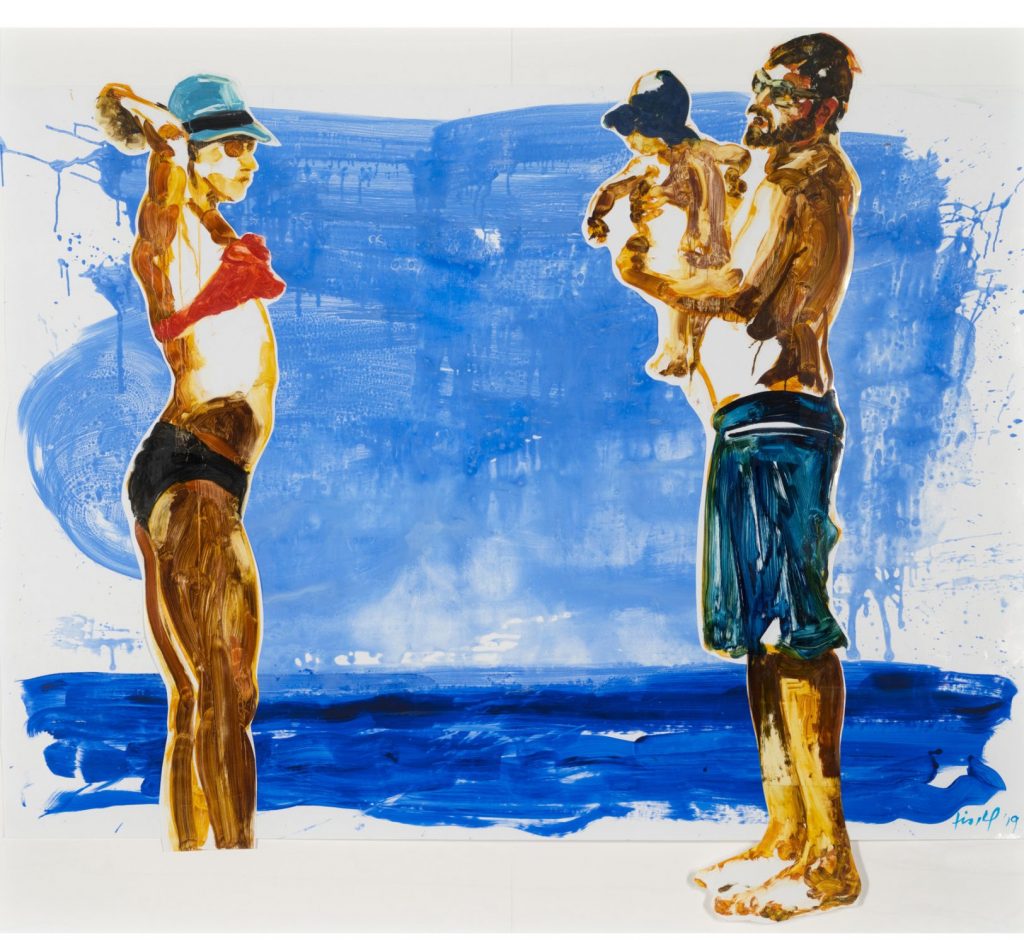
And I know that Fischl, like me, plays tennis. He hasn’t often painted it, though ‘The Changeover’,1992, shows John McEnroe changing ends in a match he lost to the young Swede Niklas Kulti that year, marking the approaching end of his career. Fischl is a friend of McEnroe’s, and they have played without Eric making ‘any pretence to be competitive’.
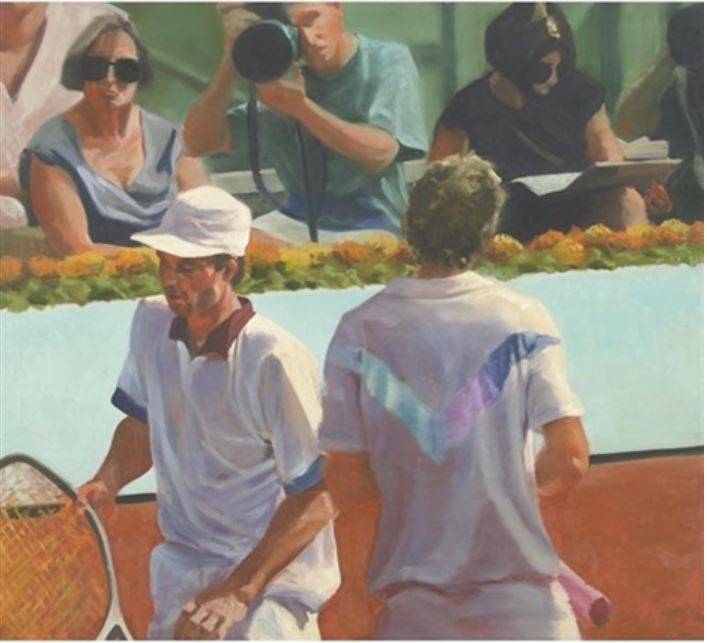
Moreover, Fischl goes on to suggest that painting and tennis are rather alike. Both:
* take place inside a rectangle;
* are about gestures produced through extended reach – of the brush or racquet;
* feature the resistance of an opponent – canvas and materials have a way of being stubborn, of not doing what you want them to do;
* will have days when you are ‘in the flow’ without overthinking, and days when you are not;
* have differently expert types of audience. In tennis the opponent who watches for your intentions, as well as an audience that comes to watch, who cares more for a good game than for who wins, and who won’t help you get better. Likewise in art: viewers are there to see something they like, but you can’t go to them to find out how to get better, you have to go to other artists.
And how was it playing against Mac? Such is his variety that ‘every ball that came back to me would look different – you never know what would come next. That automatically puts you on his side of the court, thinking about what he’s doing, not what you’re doing…’.
Art writer and curator Paul Carey-Kent sees a lot of shows: we asked him to jot down whatever came into his head

